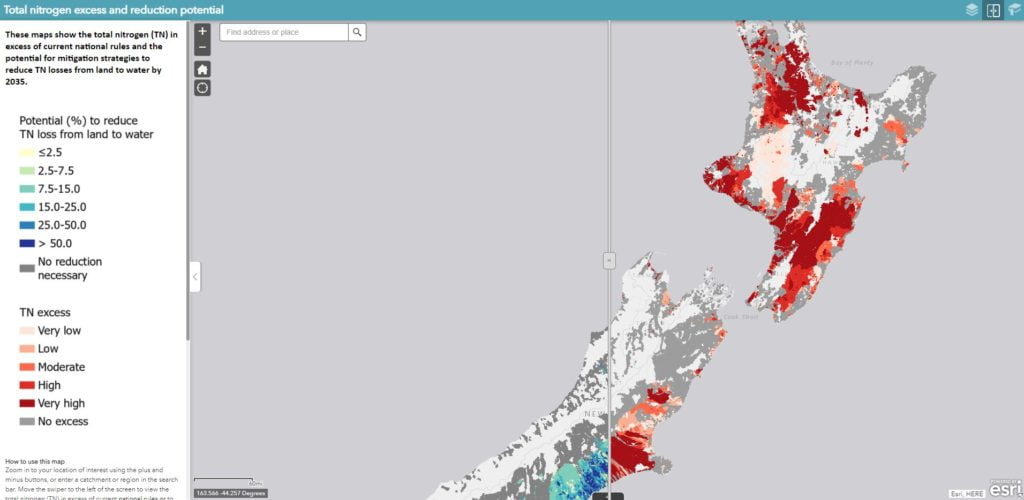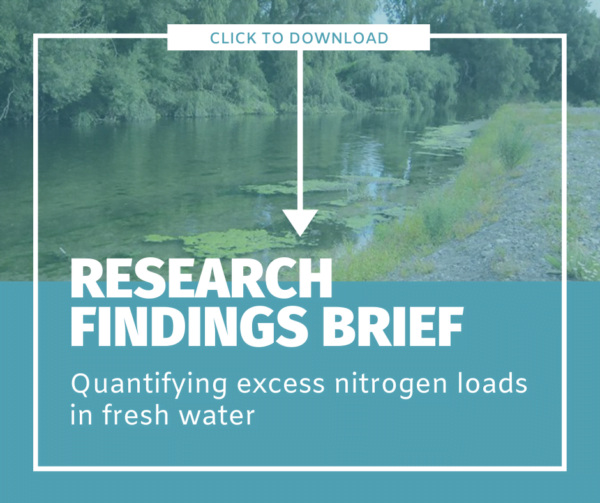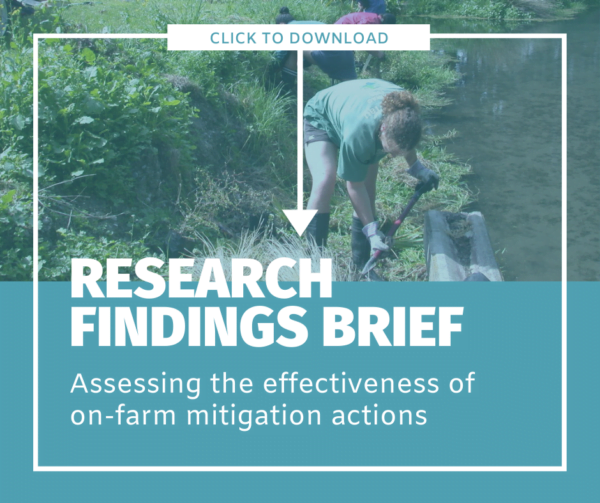Nitrogen Loads Exceed Current Regulations in 9 of 15 Regions – but On-Farm Action Could Reduce the Load by One-Third
Where is our water quality under the most pressure – and can we relieve the pressure by 2035? A new interactive map provides the big picture. Plus: New research tells us effective action by farmers has significantly offset the increased nitrogen load from land use intensification over the past 20 years
An interactive map published today allows New Zealanders to see which rivers, lakes and estuaries are under the most pressure from agriculture, and whether all farmers adopting all on-farm mitigation actions will ease this pressure by 2035.
The map brings together multiple data sources, modelling and analysis from two major research projects, funded by the Our Land and Water National Science Challenge.
The map allows users to zoom in to any of New Zealand’s catchments or regions, and swipe between two views. Swiping to the left reveals the total nitrogen load in excess of current regulatory objectives. Swiping to the right reveals the potential for on-farm actions to reduce nitrogen loss from land to water.
Knowing how important our rivers and lakes are to all New Zealanders, land stewards need to know where community expectations for water quality can be met through improvements in farm practice – and where current land uses may be unsuitable.
This information is crucial to helping farmers in degraded catchments decide whether to continue investing in mitigation actions or consider making changes to land use or land-use intensity.

Swipe left: Total nitrogen excess
The research into total nitrogen excess found that at least 43% of New Zealand’s agricultural land (31% of New Zealand’s total land area) is in catchments that are under pressure. ‘Pressure’ is defined by the research as the ratio of the current load of total nitrogen to the maximum allowable load of nitrogen that can be emitted and still meet current regulatory criteria.
The nitrogen load reductions required to meet water quality objectives in some regions are large relative to existing loads. The current load is twice the maximum allowable load in parts of the Waikato, Manawatu-Wanganui, Marlborough, Canterbury, Otago and Southland.
Find out more about this research in Research Findings Brief: Quantifying excess nitrogen loads in fresh water:

Swipe right: Potential to reduce total nitrogen loss
The research into nitrogen reduction potential considered a scenario where all on-farm mitigation actions were implemented by all dairy and sheep and beef farmers by 2035. This analysis suggests it might be possible for the potential load of nitrogen entering rivers to decrease by one-third compared to 2015.
For 96% of catchments, this will be enough to meet the national limits for dissolved inorganic nitrogen (1 mg DIN/L) that were considered for inclusion in national policy earlier this year (note this is not current policy).
This analysis also found that our rivers would be in much worse condition today if farmers had not adopted better practices between 1995 and 2015. Significantly more nitrogen (45% more) would have entered rivers from dairy-farmed land between 1995 and 2015 if farmers had not adopted better practices.
Despite these efforts, increased intensity of food production per hectare over the same period, along with a 40% increase in land area used for dairy, continued to put pressure on freshwater by increasing total nitrogen loss. Mitigations were not sufficient to offset these increased nitrogen loads.
Find out more about this research in Research Findings Brief: Assessing the effectiveness of on-farm mitigation actions:

A pragmatic response to this information
“Aotearoa’s freshwater quality is degraded, and in some areas much more than others,” says Professor Richard McDowell, chief scientist at the Our Land and Water National Science Challenge.
“However, the current situation is much better than it would have been if no action was taken while the same increase in food production occurred.”
“Many land managers have taken pragmatic and effective action to care for the land over the past 20 years. In many catchments, accelerating this work will be enough to meet current water quality objectives, particularly if land stewards plan to meet catchment objectives together.”
“For other catchments, applying all known and emerging mitigations may be less pragmatic than some change in land use or land use intensity.”
“This map helps New Zealanders see where meeting limits is achievable, and where limits aren’t likely to be met under existing land use.”
___
More information:
- A webinar, ‘What the data tells us about our water’, will present this research on Monday 7 December at noon. Register via Zoom.
- Interactive map: Total nitrogen excess and reduction potential (short URL: tinyurl.com/OLW-map)
- Under Pressure: The Lakes, Rivers and Estuaries Where Nitrogen Loads Exceed Limits
- How Much Difference Has Good Farm Management Made?
- Research Findings Brief: Assessing the effectiveness of on-farm mitigation actions, Our Land and Water (Toitū te Whenua, Toiora te Wai) National Science Challenge 2020
- Research Findings Brief: Quantifying excess nitrogen loads in fresh water, Our Land and Water (Toitū te Whenua, Toiora te Wai) National Science Challenge 2020
- Quantifying contaminant losses to water from pastoral land uses in New Zealand II. The effects of some farm mitigation actions over the past two decades, Ross Monaghan, Andrew Manderson, Les Basher, Raphael Spiekermann, John Dymond, Chris Smith, Hans Eikaas , Richard Muirhead, David Burger, Richard McDowell. Preprint available on request
- Quantifying contaminant losses to water from pastoral land uses in New Zealand III. What could be achieved by 2035? R.W. McDowell, R.M. Monaghan, L.C. Smith, A. Manderson, L Basher, D. Burger, S. Laurenson, P. Pletnyakov, Spiekermann R (New Zealand Journal of Agricultural Research, 2021)
- Implications of water quality policy on land use: A case study of the approach in New Zealand R.W. McDowell, P. Pletnyakov, A. Lim and G. Salmon (Marine and Freshwater Research, October 2020)
- Nitrogen loads to New Zealand aquatic receiving environments: comparison with regulatory criteria Ton H. Snelder, Amy L. Whitehead, Caroline Fraser, Scott T. Larned & Marc Schallenberg (New Zealand Journal of Marine and Freshwater Research, May 2020) PDF available on request
Author
2 responses to “Nitrogen Loads Exceed Current Regulations in 9 of 15 Regions – but On-Farm Action Could Reduce the Load by One-Third”
[…] December 21, 2020 […]
Can I get the GIS files for Taranaki region?
 View Our Strategy Document 2019 – 2024
View Our Strategy Document 2019 – 2024




Leave a Reply to Jeremy Xu Cancel reply